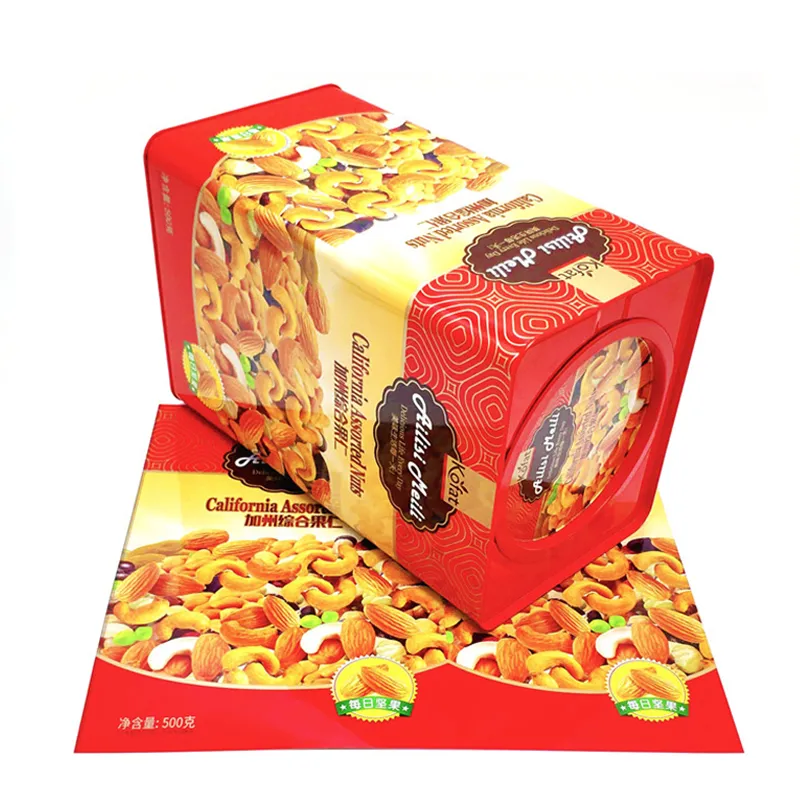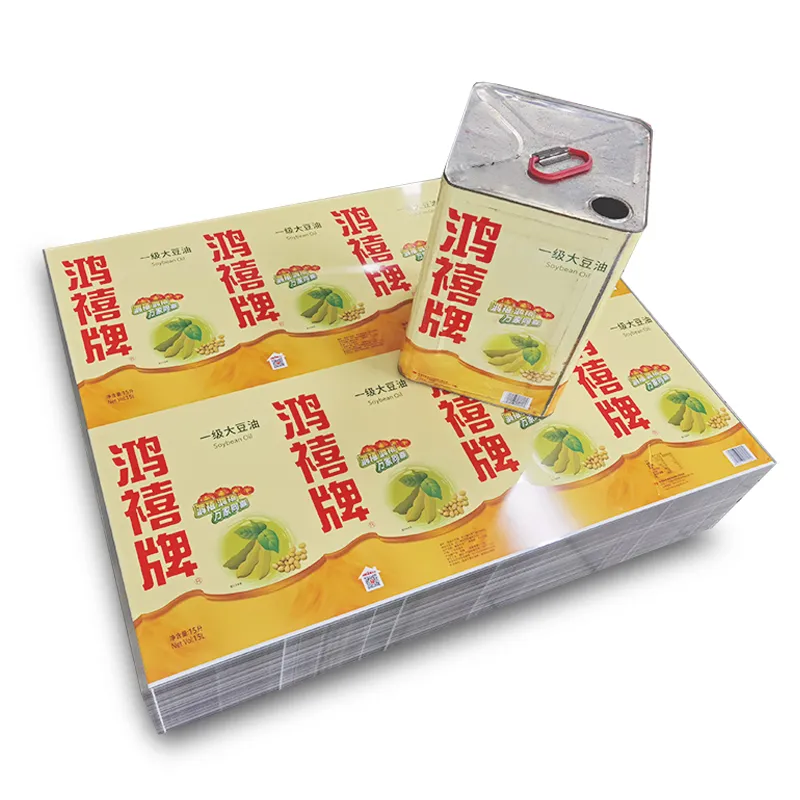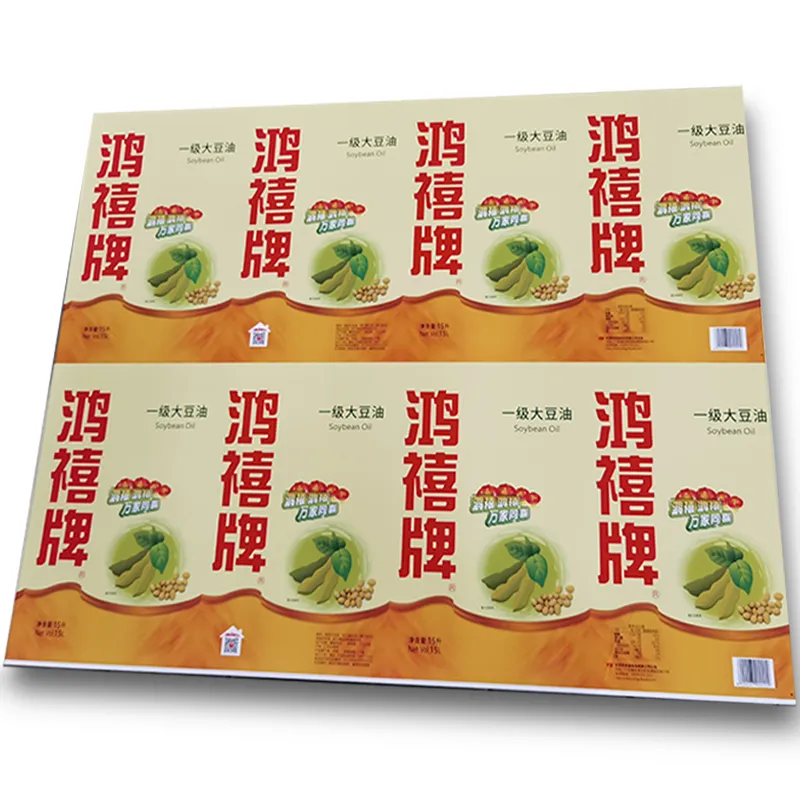In the field of food packaging, safety and hygiene standards are crucial. Tin plate sheet is a widely used material for food packaging. It is widely used in beverage cans, biscuit boxes, candy cans and other food containers. However, there are always questions about whether tin plate sheet is harmful to health. People are often concerned about the composition of tinplate sheet, its possible impact on food, and whether it releases toxic substances.
This article will deeply analyze the composition of tinplate sheet, its application characteristics in food packaging, and whether it poses a threat to health, answering this important issue of food safety from a scientific perspective.

What is tin plate sheet?
Tinplate sheet, also known as tinplate, is a material based on low-carbon steel or tin-plated steel, with a thin layer of tin on the surface. Its name comes from its smooth surface and excellent metallic texture. Tinplate sheet is widely used in the food packaging industry for its excellent corrosion resistance and processing properties.
Tinplate sheet consists of the following main components:
● Low-carbon steel substrate: Low-carbon steel is the main supporting material, providing the strength and rigidity of tinplate sheet.
● Tinplate: The tinplate on the outside of the tinplate sheet provides additional corrosion protection. Tin has strong antioxidant properties and can effectively protect the internal steel from reacting with air and moisture.
● Protective coating: To enhance food safety and corrosion resistance, tinplate sheets are often coated with a non-toxic organic protective coating. This coating not only prevents direct contact between the metal and the food, but also helps to extend the service life of the packaging.

What are the applications of tinplate sheet in food packaging?
Due to its moisture-proof, anti-corrosion and strong sealing properties, tinplate sheet is widely used in various types of food packaging, including:
● Beverage cans: The pressure resistance and sealing properties of tinplate sheet make it very suitable for canning carbonated beverages and beer to ensure the freshness of the contents.
● Canned food: The anti-corrosion properties of tinplate sheet help to extend the shelf life of canned food and prevent food oxidation and deterioration.
● Dry goods packaging cans: Such as biscuit cans, candy cans and tea cans, the moisture resistance and sealing properties of tinplate sheet play a key role in the preservation of these products.
Does tinplate sheet contain toxic substances?
Before answering whether tin plate sheet releases toxic substances, it is necessary to analyze the chemical composition and properties of tinplate sheet from a scientific perspective. Although tinplate sheet itself is non-toxic, many consumers are still worried about whether it will pose a threat to health under certain conditions because its main component is metal material.
1. Safety of tinplate layer
The tinplate layer on the surface of tin plate sheet has good chemical stability and usually does not react chemically with food or beverages. This is because tin has extremely low reactivity at room temperature and is not easy to react with acids and alkalis, so it is widely used in food packaging. However, the safety of tinplate sheet is also affected by some external factors, such as:
● Influence of acidic foods: Foods with strong acidity (such as tomato products, lemonade, etc.) may accelerate the corrosion of the tin layer and cause a small amount of tin to be released. Although tin is less toxic, it may have an impact on health if ingested in excess.
● Influence of temperature: Tinplate sheet has poor stability in high temperature environments. If used for long-term high-temperature storage, the tin layer may change, and there is a risk of trace release.
2. The role of protective coating
To further improve the safety of food packaging, a layer of organic protective coating is usually applied inside the tinplate sheet can. This coating can effectively isolate the direct contact between food and the tin layer, reducing the risk of possible tin release. Commonly used coating materials are non-toxic coatings such as epoxy resins, which ensure the safety of food packaging.
At present, global food packaging standards strictly stipulate the safety requirements of food contact materials. Before entering the market, tinplate sheet must undergo strict testing and certification to ensure that it meets international and national food safety standards. For example, both Chinese national standards and EU regulations have clear requirements for the composition and safety performance of packaging materials to ensure the health and safety of consumers.

Health risk assessment under specific conditions
1. Safe range of tin intake
According to the Codex Alimentarius Commission and the World Health Organization (WHO), tin has low acute toxicity to the human body and short-term intake will not cause significant harm to health. Generally, the tolerance level of tin is about 2 mg per kilogram of body weight per day, and the amount of tin migration in most tinplate sheet cans is far below this level.
Even so, the accumulation of tin intake still needs to be controlled. Especially for foods with high acidity, such as tomatoes and acidic juices, consumers are advised to avoid long-term storage to prevent the migration of tin.
2. BPA issues in epoxy resin coatings
Epoxy resin coatings may contain bisphenol A (BPA), which has been one of the focuses of attention in recent years. BPA is a chemical commonly used in plastics and resins, and its impact on the human hormone system is controversial. For this reason, many countries and regions have gradually tightened the use standards of BPA and even required the ban of BPA in food packaging materials. Today, most tinplate sheet can manufacturers have adopted BPA-free coating materials to ensure their safety.
How to ensure the safety of tinplate sheet cans?
1. Choose a regular packaging brand: Most regular food canning brands will strictly follow food safety standards. When purchasing, consumers should try to choose certified well-known brands to ensure product quality.
2. Avoid long-term storage of acidic foods: For foods with strong acidity, avoid long-term storage in tinplate sheet cans, or try to choose packaging cans with safe coatings to reduce tin migration.
3. Observe the integrity of the packaging: When the packaging of canned food is found to be damaged, rusty or otherwise abnormal, avoid eating the food in it to prevent the possible contaminants from affecting your health.
4. Avoid heating or storing in a high temperature environment: Tin plate sheet cans should not be stored at high temperatures or heated directly, especially when containing acidic foods, as the increase in temperature will accelerate the dissolution of the tin layer.

Answers to Common Questions for Consumers
1. Will tinplate sheet cans release heavy metals?
Under normal conditions, tinplate sheet cans do not release heavy metals. The tin layer on its surface has good chemical stability, and the can body itself is made of low-carbon steel. As long as the internal protective coating is intact, the food will basically not directly contact the metal layer, thus avoiding the possibility of heavy metal migration.
2. How to identify the quality of tinplate sheet cans?
High-quality tin plate sheet cans usually have a smooth tin layer and a uniform coating, the coating is intact, and the can body has no obvious dents or scratches. Consumers can check the quality certification mark on the outer packaging to find out whether it meets food safety standards. In addition, choosing well-known brands and compliant products can better ensure the safety of packaging.
3. How to store tin plate sheet canned food after opening?
Once the tin plate sheet canned food is opened, it is recommended to transfer it to other containers for storage, especially acidic or high-water content foods, to reduce the risk of tin migration during long-term storage. After opening, canned foods should avoid long-term contact with air to prevent oxidation and deterioration.

